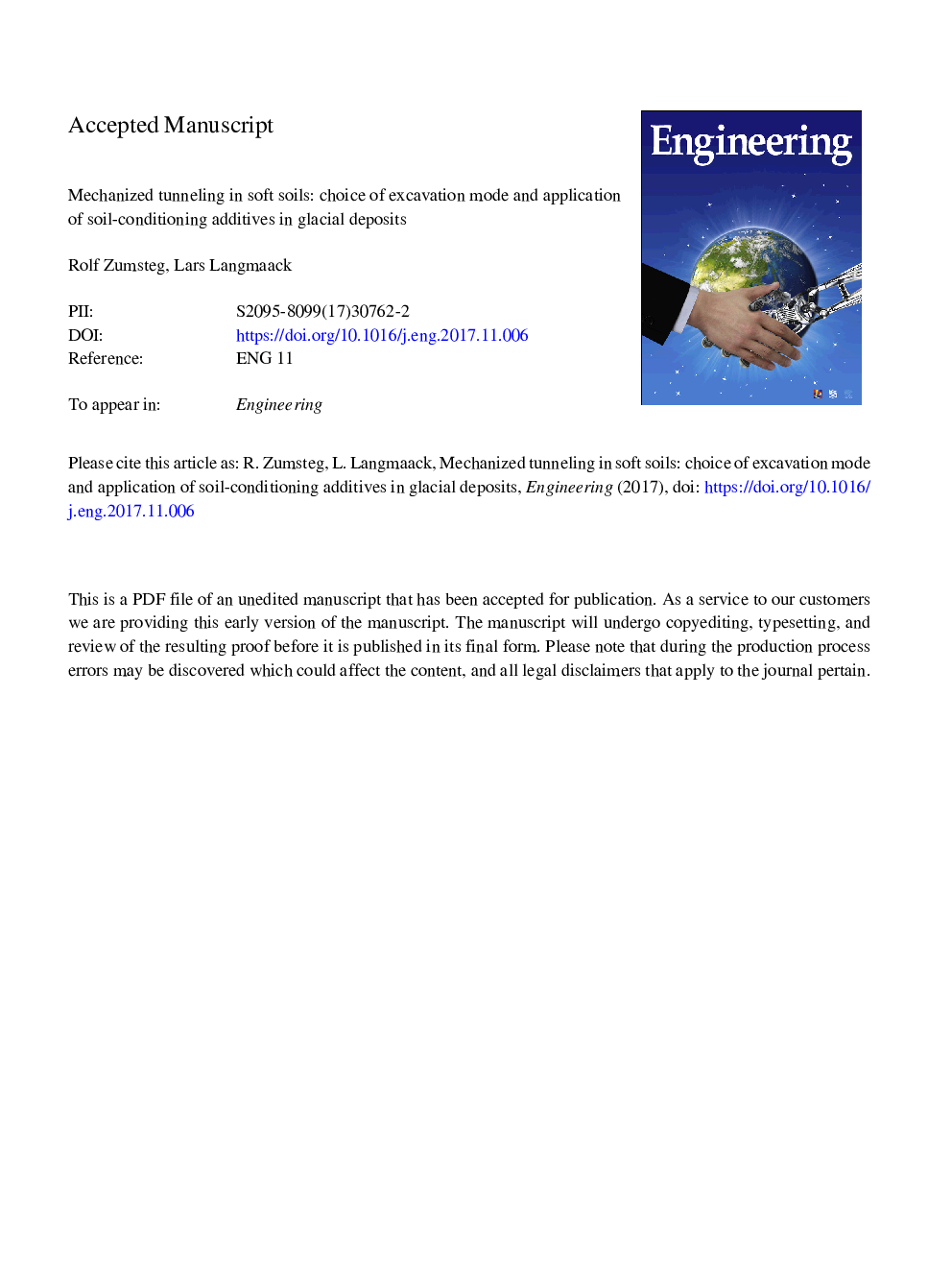| Article ID | Journal | Published Year | Pages | File Type |
|---|---|---|---|---|
| 6893401 | Engineering | 2017 | 20 Pages |
Abstract
The history of the formation of the alpine region is affected by the activities of the glaciers, which have a strong influence on underground works in this area. Mechanized tunneling must adapt to the presence of sound and altered rock, as well as to inhomogeneous soil layers that range from permeable gravel to soft clay sediments along the same tunnel. This article focuses on past experiences with tunnel-boring machines (TBMs) in Switzerland, and specifically on the aspects of soil conditioning during a passage through inhomogeneous soft soils. Most tunnels in the past were drilled using the slurry mode (SM), in which the application of different additives was mainly limited to difficult zones of high permeability and stoppages for tool change and modification. For drillings with the less common earth pressure balanced mode (EPBM), continuous foam conditioning and the additional use of polymer and bentonite have proven to be successful. The use of conditioning additives led to new challenges during separation of the slurries (for SM) and disposal of the excavated soil (for EPBM). If the disposal of chemically treated soft soil material from the earth pressure balanced (EPB) drive in a manner that is compliant with environmental legislation is considered early on in the design and evaluation of the excavation mode, the EPBM can be beneficial for tunnels bored in glacial deposits.
Related Topics
Physical Sciences and Engineering
Computer Science
Computer Science (General)
Authors
Rolf Zumsteg, Lars Langmaack,
